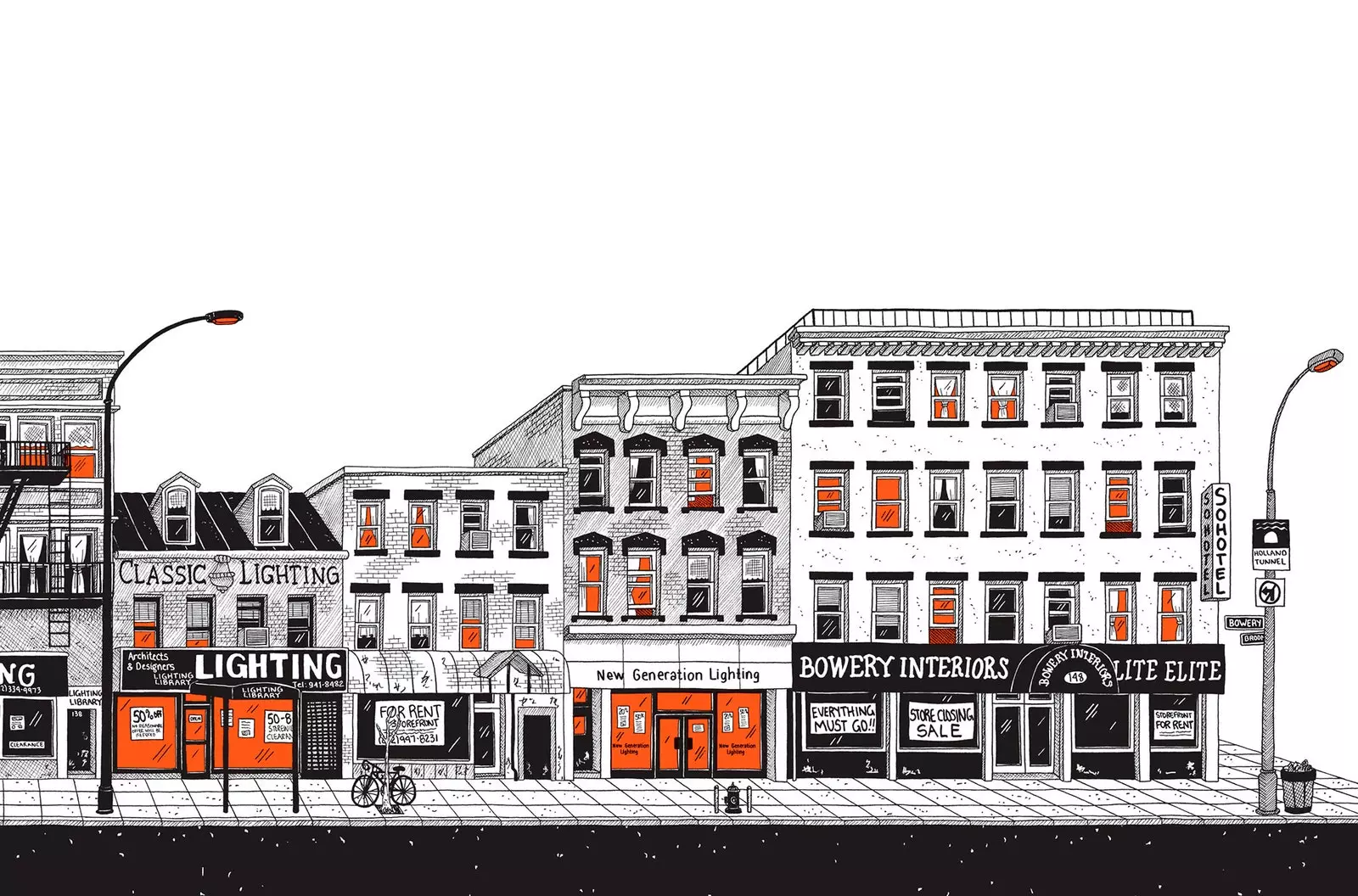
'Neighbourhoods, blocks and garbage', the new and best alternative guide to New York
There is the New York of the great avenues, of the luxury stores and the dazzling lights of the advertisements of the skyscrapers and another very different New York that circumvents everything we already know. This parallel world, which coexists without almost interfering, fills the pages of this illustrated book that emerges as one of the most original guides to carry under your arm on a next visit to Manhattan.
its author, Julia Wertz , she grew up in California but, like many restless people, she felt the call of New York and landed there in 2006. Her relationship with the city had all the symptoms of a typical New Yorker: a hard adaptation process, high doses of alcohol, frustrations, a state of pure happiness and, finally, an illegal eviction that returned her to California.
They were ten years of roller coaster that, at the risk of derailing, pushed her to conquer the streets of the city and investigate its history. But no big headlines. For this there are the Lonely Planet or Rough Guide. Her gaze turned to neighborhoods treated as second class (or even third) and instead of entertaining herself with photographs (although she likes them a lot and uses them sporadically) she preferred to print her experience in vignettes. Her drawings reveal amazing detail and let our imaginations sow them to life.
As a statement of intent, Neighborhoods, blocks and garbage start at the other end Flashing Meadows, now known for the US Open tennis tournament but, in the 1960s, the site of the failed New York World's Fair. Its original structures, many of them abandoned and in a state of disrepair, are seen from the highway that connects JFK airport with Manhattan and is a regular point of visit for tourist tours called 'Contrastes'.
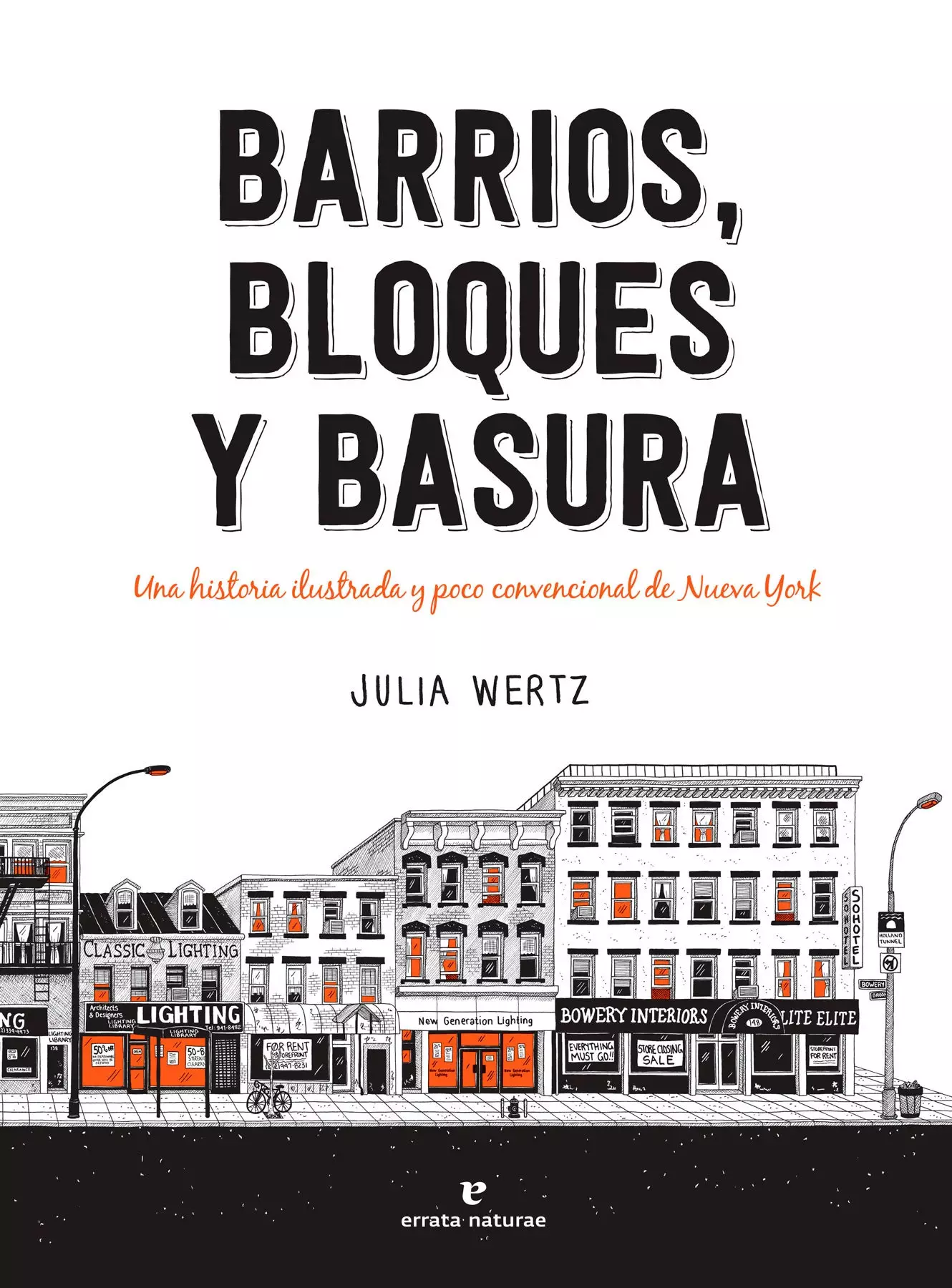
An illustrated and unconventional history of New York
Wertz sneaks in the form of her childish avatar throughout the book to reveal historical anecdotes without leaving aside her irresistible sarcasm. In this case, she reveals to us that the tacky streetlights that populated the park during the fair found a new life in a private airport in Pennsylvania.
The neighborhoods of Greenpoint, Bed-Stuy and Carroll Gardens, Usually ignored by visitors, they have a reserved VIP area in this beautiful manual of the city. Wertz pours all her love and detail into the vignettes that they immortalize stretches of streets in an original before and after comparison.
Theaters converted into shops or mountains of forgotten bricks, local businesses dressed up as juice or frozen yogurt bars or family residences transformed into glass skyscrapers. The illustrations are a feast for our eyes and a catalog of curiosities.
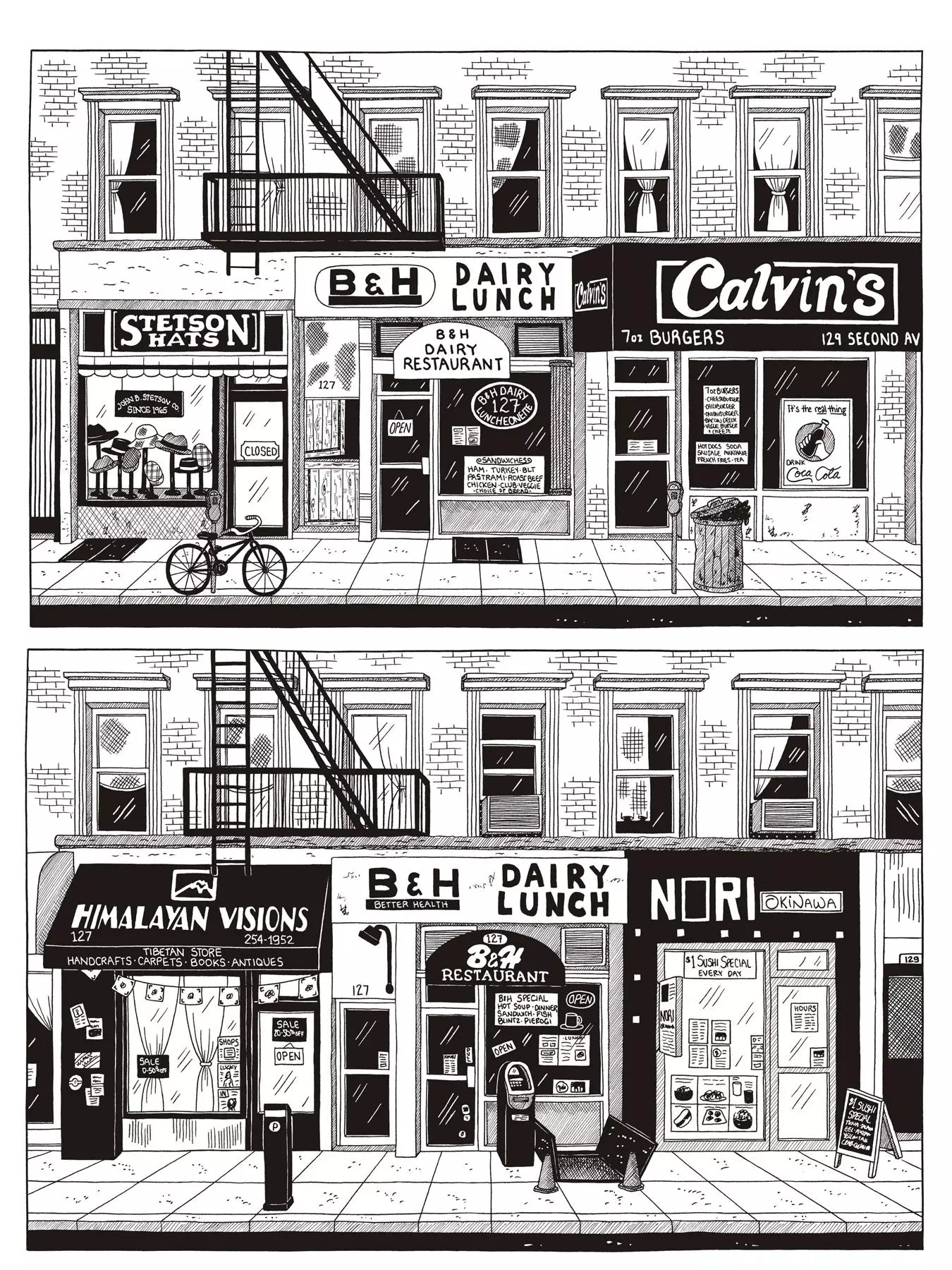
Neighborhoods, Blocks, and Garbage: The Alternative Guide to New York
Did you know that potato chips were invented in New York by a chef who wanted to punish his complaining customers? The credit card and teddy bears share the same merit. Or, for example, Have you noticed how many pizzerias called Ray's there are in the city? At first you think it's a chain but you soon realize that not all of them have the same name: Ray's Original Pizza, Famous Ray's Pizza, World-Famous Original Ray's Pizza and endless other combinations.
The author reveals that The first Ray's was opened by Ralph Cuomo in what is now the Nolita neighborhood in 1959 and was a regular mob hangout. Between pizza and pizza, the owner also served heroin and the dollars came out of his ears. Cuomo opened another pizzeria but sold it to another chef who, in turn, divested himself of the business and thus began the overpopulation of establishments with his name and a legal battle that still continues today. **
If you have ever wondered how new yorkers live, Wertz gives you an illustrated lesson in a section dedicated to housing. After several depressing experiences, the illustrator found a tiny but nice studio in Greenpoint and stayed for ten years (until she was kicked out by her pesetero landlord).
But her adventurous spirit pushed her to find out how the rest of the 8.5 million neighbors lived. This is how it works for us an X-ray of the space in which New Yorkers fit, like pieces of Tetris, in order to live in this city.
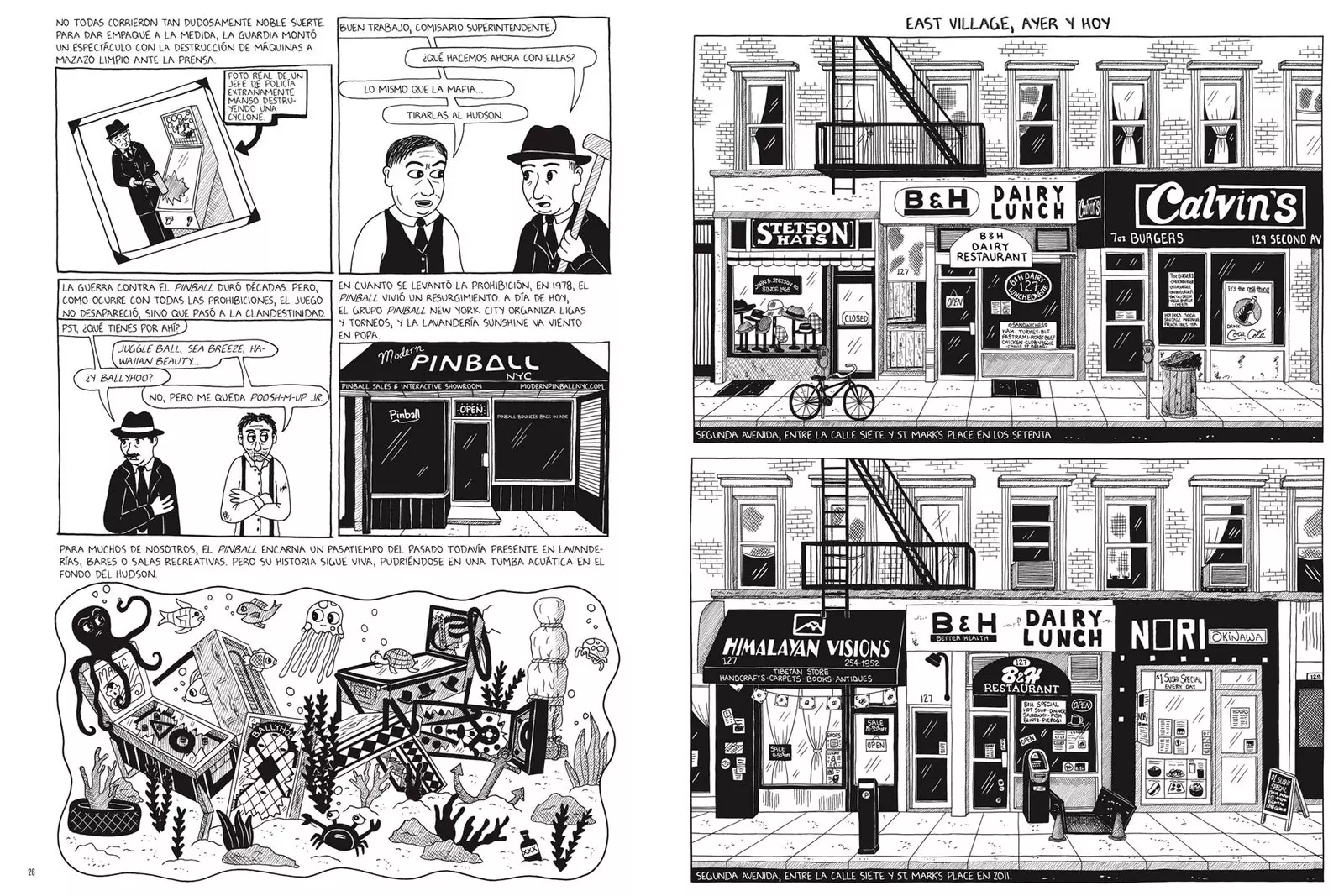
Julia Wertz's Illustrated Guide
From the recent luxury building, 432 Park Avenue , and the more than 80 million dollars that were paid for the attic to the cubbyhole of the Lower East Side where entire families lived during the immigration waves of the 19th century. Even the beautiful brownstones of Brooklyn and the old factories transformed into residences they receive the illustrated treatment of their plans with all the necessary accessories to give you an idea.
The oldest metro stops, the essential bookstores, the most legendary bars... Wertz invites you on a pleasant walk through the New York you didn't know existed. Neighborhoods, blocks and garbage is a book that will expand the vision you already have of this stressful megalopolis and will reveal its lesser-known side. Quite an achievement.
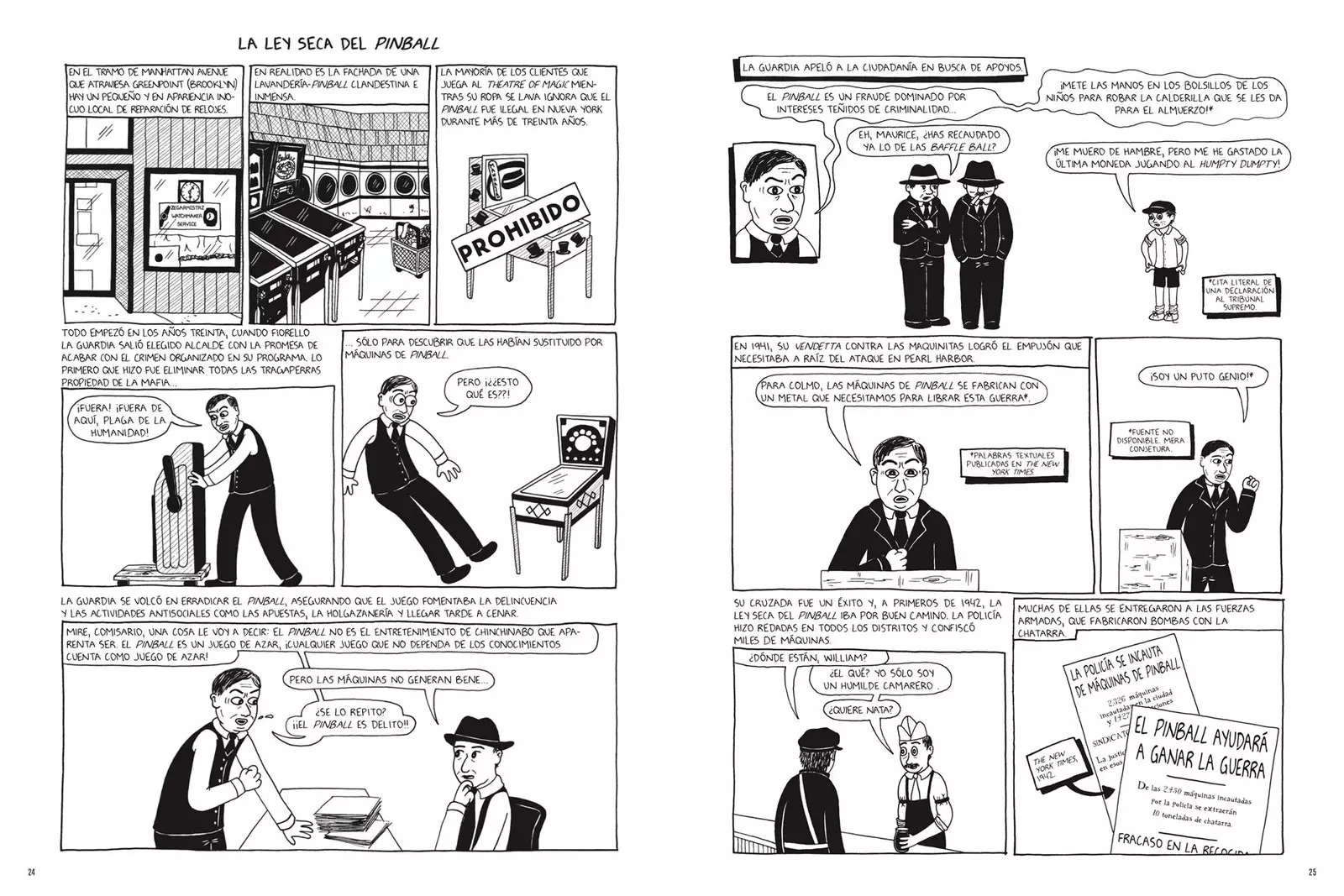
Julia Wertz grew up in California but, like many restless, she felt the call of New York
